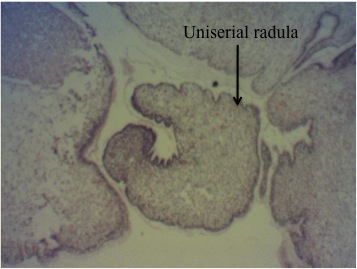Feeding Behaviour

|
|
|
|
P. ocellatus is a dietary specialist that particularly feeds on the Caulerpa
species of the siphonaceous green algae (Jensen, 1997). They feed by
piercing the algal cell wall with their uniserial radula and taking in
the cell sap (Dunlap, 1975; Cimino and Ghiselin, 1998; Maeda, 2010). |
A process call Kleptoplasty, permits the absorption and retention of the algae’s chloroplasts in the animal’s digestive cells.

The digestive cells aggregates in the dorsal lamellae, and are sheltered by the parapodia.


The dorsal lamellae consist of numerous rows/ridges of tubules that are made up of a single layer of epithelial cells that are packed with chloroplasts. Intact chloroplasts are transported to the digestive cells via the pericardial chamber (Dunlap, 1975; Hirose, 2005; Wagele and Johnson, 2001; Evertsen et al., 2007; Maeda, 2010).

These photosynthetic pigments are utilized during periods of food scarcity as well as to increase transfer of carbon to their eggs (Wagele and Johnsen, 2001). P. ocellatus are capable of retaining these functional and intact chloroplasts for up to 11 months/335 days - the longest retention in any organism (Evertsen et al., 2007). They are likely to be sensitive to light irradiance as their parapodia have been observed to open only under dim lights, and are closed under bright lights (Wagele et al., 2011). |